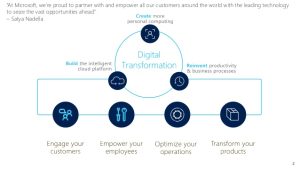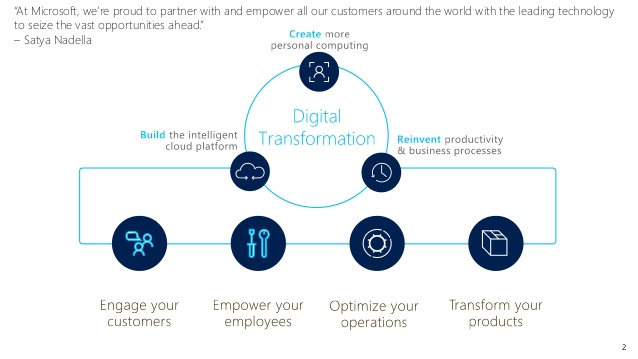The Role Of Cloud Computing In 2025.
The Role of Cloud Computing in Today’s Digital World
In the last two decades, one technology has emerged as a game-changer for businesses, governments, educational institutions, and everyday users alike—cloud computing. From hosting websites and storing data to powering artificial intelligence and enabling remote work, cloud computing has become the backbone of the modern digital world.
In this blog, we will explore what cloud computing is, how it works, its different types and services, and most importantly, its growing role in transforming industries and daily life.
What Is Cloud Computing?
Cloud computing refers to the delivery of computing services—such as storage, databases, servers, networking, software, and analytics—over the internet (“the cloud”) rather than on local computers or on-premise servers. It allows users to access and manage data and applications from anywhere in the world, as long as they have an internet connection.
In simpler terms, think of cloud computing like renting a house instead of buying one. Instead of owning and maintaining physical servers or infrastructure, organizations and individuals use resources provided by a cloud service provider like Amazon Web Services (AWS), Microsoft Azure, or Google Cloud Platform (GCP).

Types of Cloud Computing
Cloud computing is usually divided into three main types based on deployment:
-
Public Cloud: Services are delivered over the public internet and shared across multiple customers. Examples: AWS, Azure, Google Cloud.
-
Private Cloud: Used exclusively by a single organization. It offers more control and security, often hosted on-premise.
-
Hybrid Cloud: Combines both public and private cloud systems to allow data and applications to be shared between them.
Cloud Computing Service Models
Cloud computing offers various service models based on user needs:
-
Infrastructure as a Service (IaaS): Provides virtualized computing resources over the internet. Users can rent servers, storage, and networking.
Example: Amazon EC2 -
Platform as a Service (PaaS): Offers a platform for developers to build, test, and deploy applications without managing the underlying infrastructure.
Example: Google App Engine -
Software as a Service (SaaS): Delivers software applications over the internet on a subscription basis.
Examples: Google Workspace, Microsoft 365, Dropbox
The Role of Cloud Computing in Modern Technology
1. Business Transformation
Cloud computing enables businesses of all sizes to scale up or down based on demand. Startups can access enterprise-level tools without investing in expensive hardware. Large corporations use the cloud for data analytics, global collaboration, and process automation.
Benefits for businesses include:
-
Lower IT costs
-
Faster time-to-market
-
Flexibility and agility
-
Data-driven decision-making
For example, Netflix uses AWS to deliver its video streaming service to millions of users worldwide without owning any physical servers.
2. Remote Work and Collaboration
With the rise of hybrid work models, cloud-based tools like Zoom, Microsoft Teams, and Google Meet have become essential. Cloud computing supports:
-
File sharing (e.g., Google Drive, OneDrive)
-
Real-time editing (e.g., Google Docs)
-
Project management (e.g., Trello, Asana)
This has empowered employees to work from anywhere, improving productivity and work-life balance.
3. Education and E-Learning
Cloud computing has revolutionized education by making learning accessible from any location. Schools and universities use platforms like Google Classroom and Moodle to conduct online classes, share materials, and assess students.
It also enables Massive Open Online Courses (MOOCs) like Coursera and edX, which use the cloud to serve millions of learners globally.
4. Healthcare and Medical Services
Cloud technology supports the storage and sharing of electronic health records (EHRs), telemedicine, and medical research. Hospitals can:
-
Store patient data securely
-
Collaborate with specialists remotely
-
Use AI and machine learning for diagnostics and treatment plans
During the COVID-19 pandemic, cloud platforms played a crucial role in vaccine research, virtual consultations, and contact tracing apps.
5. Artificial Intelligence and Big Data
Cloud computing powers AI and big data analytics. Services like Amazon SageMaker or Google AI Platform let businesses:
-
Train machine learning models
-
Analyze customer behavior
-
Forecast trends and sales
-
Automate customer service with chatbots
Without the cloud, running complex AI models would require expensive and powerful hardware that few organizations can afford.
6. Gaming and Entertainment
Cloud gaming platforms like NVIDIA GeForce NOW, Xbox Cloud Gaming, and Google Stadia allow users to play high-end games without needing a powerful console or PC. The cloud renders the game on remote servers and streams it to the player’s device.
Streaming services (e.g., Spotify, YouTube, Netflix) also rely on cloud infrastructure to deliver fast, reliable content worldwide.
7. Disaster Recovery and Backup
One of the most critical uses of cloud computing is data backup and disaster recovery. With cloud-based backup services, organizations can:
-
Restore data after cyberattacks or system failures
-
Ensure business continuity
-
Avoid physical data loss due to fire or hardware damage
Services like Backblaze and Carbonite make it easy to automate backups and retrieve lost data quickly.
Challenges in Cloud Computing
Despite its advantages, cloud computing comes with its own set of challenges:
-
Security & Privacy: Data breaches and unauthorized access are ongoing concerns. Encryption, firewalls, and secure access controls are essential.
-
Downtime & Reliability: Even top cloud providers can experience outages, affecting global services.
-
Compliance & Regulation: Different industries and countries have strict data laws (like GDPR), which cloud providers must follow.
-
Vendor Lock-In: Switching between cloud providers can be complex and costly.
Addressing these challenges requires careful planning, skilled IT professionals, and updated security policies.
Future of Cloud Computing
The future of cloud computing is incredibly promising. Here are some trends shaping the next phase of cloud evolution:
-
Edge Computing: Processing data closer to the source (e.g., IoT devices) for faster performance.
-
Multi-Cloud Strategies: Businesses using more than one cloud provider for better flexibility and risk management.
-
Serverless Architecture: Developers focus solely on code, while the cloud provider manages the server infrastructure automatically.
-
Green Cloud Computing: Environmentally friendly cloud data centers using renewable energy.
Cloud computing will continue to drive innovation in AI, blockchain, 5G, smart cities, autonomous vehicles, and more.
Conclusion
Cloud computing is not just a tech trend—it’s a foundational element of the digital economy. It empowers businesses to grow, governments to deliver services efficiently, students to learn from anywhere, and users to access content instantly. As more devices connect to the internet and data generation increases, the role of cloud computing will only grow.
